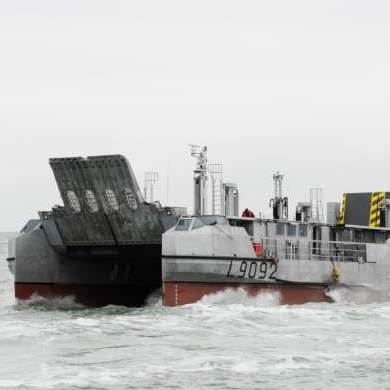Today, I want to highlight a new Russian-language resource for analysts of the Russian military. The Waran Project bills itself as an informational and analytical resource put together by independent (though anonymous) Russian specialists. It publishes both original articles about the Russian military and translations of Western articles about developments in the West that might be interesting to a Russian audience. It’s only been active since the beginning of March, so there isn’t a lot of material on the site yet, but what there is is of rather high quality.
The most recent article is a very cogent defense of the utility of the Mistral project for the Russian navy. Long time readers may remember that the Mistral was a frequent topic for me in the early days of the blog, so it seems worth returning to the topic. Especially since the Mistral again seems to be under attack in Russia from opponents of imports of military technology. The Waran project article goes through the reasons why it makes sense for Russia to not only buy the two ships already under construction in France but to go ahead with plans to build two more ships at Russian shipyards.
The indirect benefits of the ships for Russian defense industry include the acquisition of the L-Cat landing catamaran, at least two of which will be on board each Mistral. These vessels do not have any Russian equivalents and would stimulate the development of a new naval infantry fighting vehicle. The Mistral project will also promote the construction of 80-100 new helicopters, since each Mistral will have 16 helicopters on board and some spares would have to be procured. There will also be direct benefits, of course. Not only will the project help to modernize ship design and construction, but it will also provide guidance on how to modernize project control and business processes, interactions with suppliers and subcontractors, and various logistics issues, all of which are weakly developed in Russian shipbuilding.
In terms of how the ships could be used, the author argues that the helicopter-carrying capacity of the Mistral will enable each ship to form the nucleus of an ASW task force. The Mistral would be very useful in local conflicts and low intensity warfare, as was shown by the French experience in Libya in 2011, where it served well as both a command ship and as a base for helicopter attack operations. Obviously, it would also be effective in amphibious warfare operations. It would also be useful in humanitarian assistance and evacuation operations, which is a gap for the Russian navy. It can also engage in show the flag and naval diplomacy operations, becoming a more effective soft power instrument for Russian foreign policy than nuclear submarines or missile cruisers — which are much more threatening to potential target nations.
The article also addresses potential alternatives to the Mistral. First, it makes clear that domestic alternatives are not a viable solution. The Ivan Gren amphibious ship has been under construction at Yantar for almost a decade because of inadequate financing and constant design modifications. Any domestic project would likely be little more than a modified version of the so-called Ivan Tarawa design of the 1980s and would take eight years at the very least, whereas the Mistrals are being built in three. When compared to other foreign options, the Juan Carlos is more or less comparable, while the Italian Cavour is much more expensive and the South Korean Dokdo is smaller and has faced design problems. Furthermore, the Dokdo depends on American LCAC landing craft, which would be unlikely to be a feasible acquisition for the Russian military. As it is, the Mistral allows for the further development of relations with French defense industry, which has become one of the leading foreign suppliers to the Russian military.
In conclusion, the author finds that while it makes sense to delay the decision to acquire the two additional ships until after the Russian navy has had some experience working with the first two ships, there is no reason to cancel the purchase. Since I’ve long believed that imports are necessary for both the successful rearmament of the Russian military and for the modernization of Russian defense industry, I am very much in agreement with this conclusion.
I’ll be curious to see what the future holds for the Waran project. Its initial analytical products are very good and there’s certainly a need for more unbiased and well-informed coverage of the Russian military, so I have high hopes for the future.
Dmitry Gorenburg is a Senior Analyst at CNA blogging for PONARS Eurasia on military and security affairs in Russia and Eurasia. This comment is also available on Russian Military Reform.










